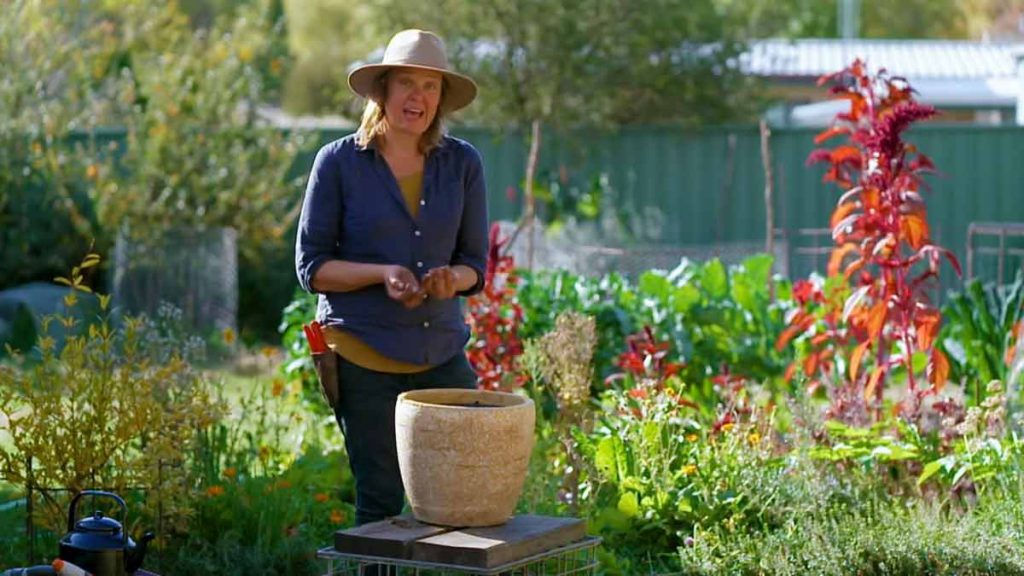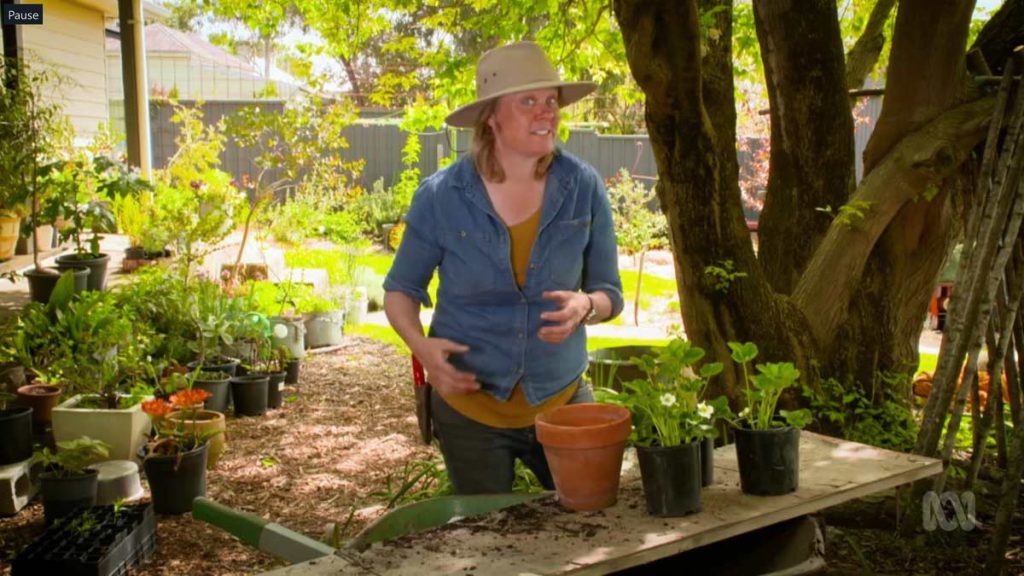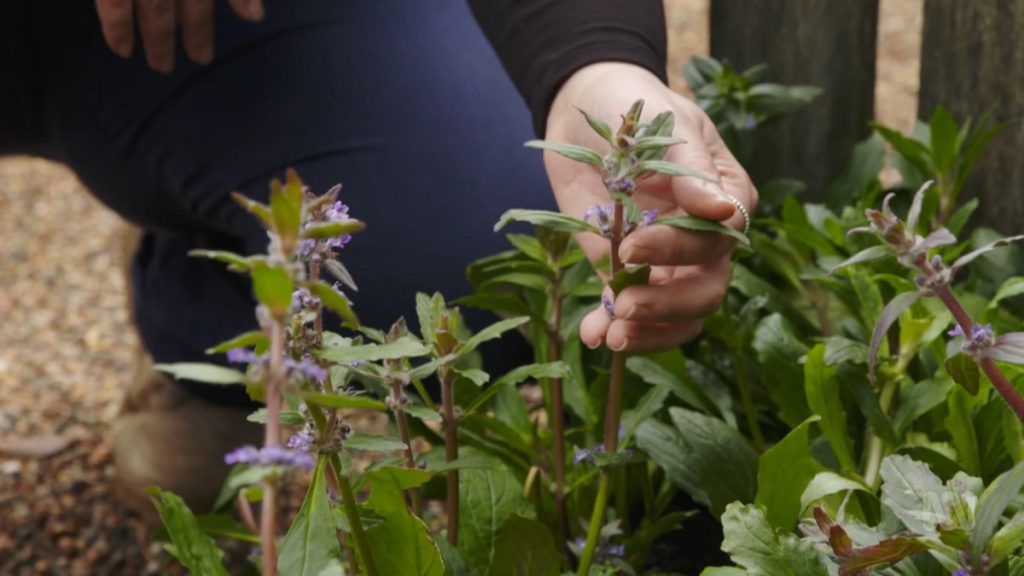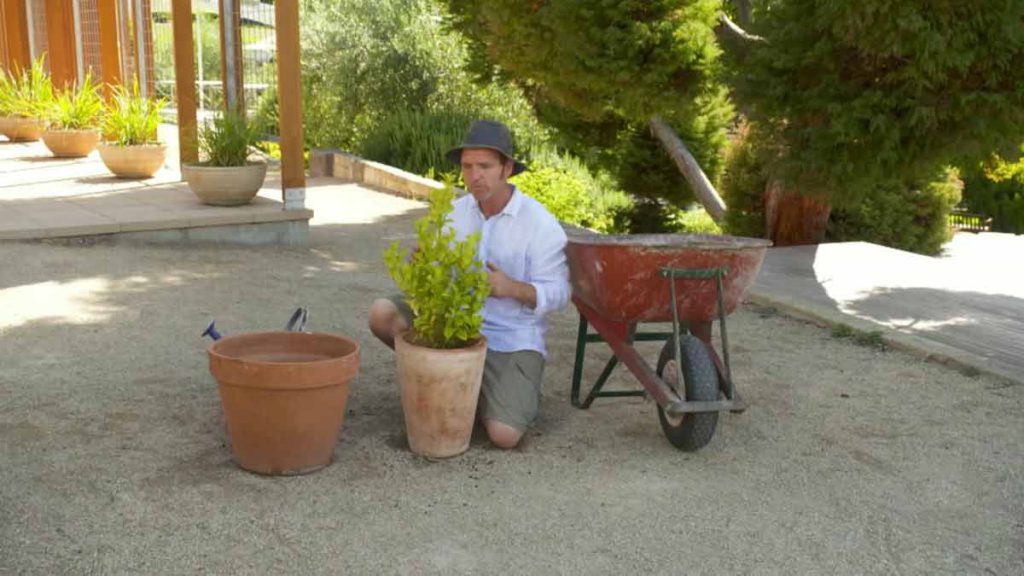Gardening Australia episode 8 2021: Costa Georgiadis meets students planting bee-friendly highways, Jane Edmanson learns how to create a healing garden space, Millie Ross shows how to grow great garlic, and Jerry Coleby-Williams meets a living legend.
Gardening Australia has always provided practical, trustworthy and credible gardening advice to inspire and entertain. Inspiring, entertaining and full of practical advice, join Costa Georgiadis and the team as they unearth gardening ideas, meet avid gardeners and look at some of the most inspiring gardens from across the country.
Gardening Australia episode 8 2021
Bee ‘n’ Bee Highway
Costa visits a project to provide pollinator super-highways by planting insect-friendly gardens in schools right across Sydney. The brains behind the idea is Dr Judy Friedlander, who founded Planting Seeds to realise her vision of recreating the wildlife-filled city she remembers from her childhood. Judy says pollinators are important not just to pollinate many of the food plants we eat, but also to improve soil health and as a vital part of the whole ecosystem.
However pollinators are in decline globally – not just insects but birds, butterflies, bats and more. But the good news is that urban planting can be a huge boost to support the ecological system, if we revegetate with biodiversity in mind. The small garden at Ryde East Public School is one of 12 gardens in Ryde and more than 40 across Sydney, providing food stops for hungry critters. There are plans to expand throughout NSW.
Planting Seeds has chosen schools to roll out the project, partly because most have a spare bit of suitable garden, but also because of the opportunity to get kids on board. Entomologist Francisco Garcia Bulle Bueno takes time out from his PhD studies to teach pupils about the Australian bees and insects they are likely to see and the plants they feed on. “The main goal is to connect people to nature,” he says. He has a small colony of native stingless bees (Tetragonula carbonaria) to show the children how it operates, and often installs hives in school grounds.
FAQs – Functional productive plants | Broody chooks | Tino’s jobs
Josh gives examples of plants that are functional and productive, Sophie deals with broody chooks and Tino prepares for a busy easter in the garden – planting a green manure crop and cutting back his perennial herbs.
Guide to Garlic – Gardening Australia episode 8 2021
Millie shares all her expert tips on growing great garlic – even if you only have room for a pot of it! If you are gardening in temperate or cool climates, anywhere from Tassie to Southern QLD, autumn is the time to give garlic a go! Like growing any veg, it is important to avoid growing garlic in the same soil, year after year. Millie plants hers in the bed where she’s just pulled out the last of thetomatoes.
TIP!! Make chutney from any green tomatoes or hang the plant upside-down in a shed – those remaining tomatoes may still ripen!
Halfway House
Josh Byrne creates a half-way house where greenhouse plants can adjust to being outdoors. Josh’s greenhouse has been great to give his plants protection from cold and wild weather. However, when it’s time to plant them out in the garden, it’s a good idea to put them in a sheltered place first so they toughen up before being exposed to full sun and other tough conditions. This is called hardening off.
Josh prepares a half-way house for them by his compost bins, in a semi shaded position. It will be similar to the vegie-washing station he created over his compost bin a while ago (see link below). The mesh base will sit on similar brackets and the two fixtures will be interchangeable, depending on how much moisture Josh needs on the compost below. It not only saves space, but also works well with the composting system.
Reviving Marjoram – Gardening Australia episode 8 2021
Tino shows how to revive a patch of marjoram in the garden. It’s marjoram (Origanum majorana cv.), which is related to oregano but has a sweeter flavour. It’s good on pizza and pasta. It also makes a great groundcover or aromatic lawn. Marjoram is a frost-sensitive perennial, so the olives protect it. Tino weeds the patch and uses shears to clip it back – in smaller patches you can use secateurs and on larger areas even mow it.
To propagate, simply pull up some of the creeping stems with roots attached, and pot it up or plant it straight out in another area of the garden. The cuttings can be stripped of leaves that can be washed, dried and used in the kitchen.
Designed to Heal
Jane explores a wellbeing garden and learns how clever design can create a calming space for quiet reflection. Nestled within the cool oasis of the Fern Gully, the Royal Botanic Gardens, Victoria has created three spaces designed for meditation and for “contemplating your connection with nature or connection to life” says Landscape Architect Andrew Laidlaw. As visitors follow the often-busy Fern Gully boardwalk, the Wellbeing Gardens give the opportunity to leave the main path, stop, pause and reflect.
The gardens were created thanks to funds donated by three supporters, who each had stories of lost loved ones. “We designed the gardens with those people in mind, but the gardens are for everybody,” says Andrew. To create a sense of ‘wellbeing’ the spaces feature four elements: Green, water, sensory engagement (through plants, textures, sounds or feelings), and symbolism.
Andrew adds that diversity is also a key feature: “The detail in the planting is really important in these meditation gardens. There are tests now being done that show that if a garden has lots of different plants, that really adds to the person’s experience and to their health and wellbeing.”
Bush in the ‘Burbs – Gardening Australia episode 8 2021
Clarence meets a gardener who has slowly recreated a slice of Sydney bushland in what used to be a cottage-style garden. Clarence is at a steep block in suburban Cremorne, on Sydney’s north shore, but the garden created here by Harry Loots is packed with indigenous plants to make it feel more like a piece of local bushland.
Harry grew up here – his father built the house in 1959 and his mother created a cottage garden around it. But since Harry discovered native plants about 35 years ago, he has slowly been replacing the camellias and roses with local plants. Now more than 170 species grow here.
Pot-et-fleur
Sophie revives an old-fashioned floristry style that combines living plants with colourful cut flowers.




